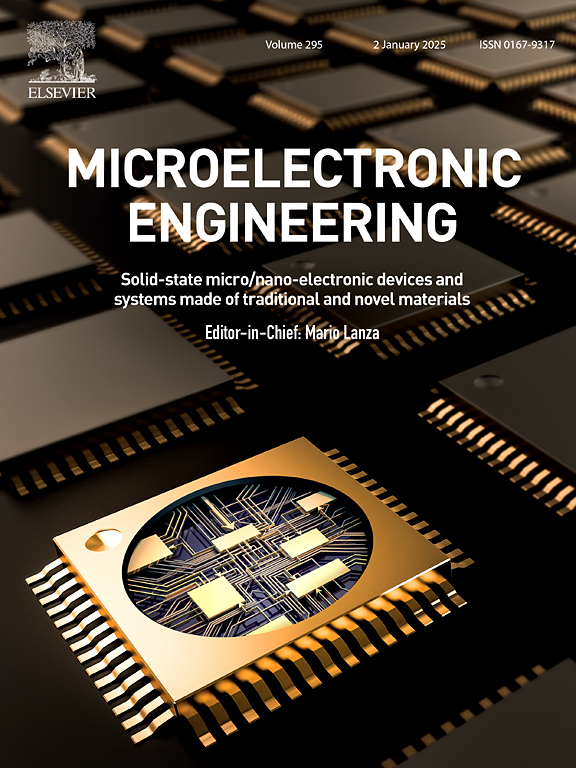Vertical gallium nitride MOSFETs: Advanced architectures, fabrication technologies, and performance breakthroughs for high-power applications
IF 3.1
4区 工程技术
Q2 ENGINEERING, ELECTRICAL & ELECTRONIC
引用次数: 0
Abstract
The rapid advancement of power electronics demands revolutionary semiconductor technologies that transcend the fundamental limitations of silicon-based devices. Vertical gallium nitride (GaN) metal-oxide-semiconductor field-effect transistors (MOSFETs) have emerged as transformative solutions, leveraging the exceptional material properties of GaN through innovative three-dimensional device architectures that enable unprecedented performance scaling. This comprehensive review examines the current state and future prospects of vertical GaN MOSFET technology, encompassing fundamental device physics, advanced architectural innovations, fabrication methodologies, and commercial implementation pathways. The unique advantages of vertical current conduction in GaN devices address critical limitations of conventional lateral architectures, including non-uniform electric field distributions, surface sensitivity, and voltage-current trade-off constraints. Recent technological breakthroughs have demonstrated remarkable achievements: breakdown voltages exceeding 1400 V, specific on-resistance values below 1.4 mΩ·cm2, current densities surpassing 200 A/cm2, and channel mobilities approaching 250 cm2/V·s. These performance metrics establish vertical GaN MOSFETs as competitive alternatives to silicon carbide devices while offering superior switching characteristics and system integration capabilities. This review systematically analyzes diverse device architectures, from conventional trench-gate structures to advanced three-dimensional concepts including FinFET-inspired designs, nanowire arrays, and dual-channel configurations. Manufacturing approaches spanning epitaxial regrowth techniques, all-ion implantation processes, and hybrid fabrication methodologies are evaluated for their impact on device performance and commercial viability. Critical challenges including substrate technology limitations, process integration complexity, reliability concerns, and cost optimization are comprehensively examined alongside emerging solutions and breakthrough innovations.
垂直氮化镓mosfet:高功率应用的先进架构,制造技术和性能突破
电力电子的快速发展需要革命性的半导体技术,这些技术超越了硅基器件的基本限制。垂直氮化镓(GaN)金属氧化物半导体场效应晶体管(mosfet)已经成为变革性的解决方案,通过创新的三维器件架构利用GaN的卓越材料特性,实现前所未有的性能扩展。本文全面回顾了垂直GaN MOSFET技术的现状和未来前景,包括基本器件物理,先进的架构创新,制造方法和商业实现途径。GaN器件中垂直电流传导的独特优势解决了传统横向结构的关键限制,包括不均匀的电场分布、表面灵敏度和电压电流权衡约束。最近的技术突破已经取得了显著的成就:击穿电压超过1400 V,比导通电阻值低于1.4 mΩ·cm2,电流密度超过200 A/cm2,通道迁移率接近250 cm2/V·s。这些性能指标确立了垂直GaN mosfet作为碳化硅器件的竞争替代品,同时提供卓越的开关特性和系统集成能力。本文系统地分析了不同的器件架构,从传统的沟槽栅结构到先进的三维概念,包括finfet设计、纳米线阵列和双通道配置。制造方法包括外延再生技术、全离子注入工艺和混合制造方法,评估了它们对器件性能和商业可行性的影响。关键挑战包括基板技术限制、工艺集成复杂性、可靠性问题和成本优化,以及新兴解决方案和突破性创新。
本文章由计算机程序翻译,如有差异,请以英文原文为准。
求助全文
约1分钟内获得全文
求助全文
来源期刊

Microelectronic Engineering
工程技术-工程:电子与电气
CiteScore
5.30
自引率
4.30%
发文量
131
审稿时长
29 days
期刊介绍:
Microelectronic Engineering is the premier nanoprocessing, and nanotechnology journal focusing on fabrication of electronic, photonic, bioelectronic, electromechanic and fluidic devices and systems, and their applications in the broad areas of electronics, photonics, energy, life sciences, and environment. It covers also the expanding interdisciplinary field of "more than Moore" and "beyond Moore" integrated nanoelectronics / photonics and micro-/nano-/bio-systems. Through its unique mixture of peer-reviewed articles, reviews, accelerated publications, short and Technical notes, and the latest research news on key developments, Microelectronic Engineering provides comprehensive coverage of this exciting, interdisciplinary and dynamic new field for researchers in academia and professionals in industry.
 求助内容:
求助内容: 应助结果提醒方式:
应助结果提醒方式:


